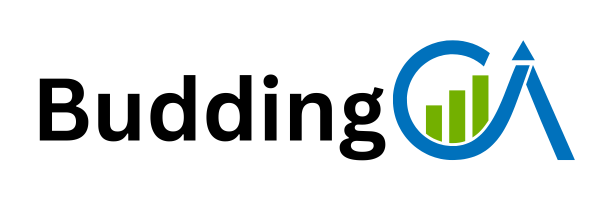Statutory audit interviews are an essential part of the recruitment process for auditing roles in India. These interviews not only test your technical knowledge but also assess your ability to apply audit concepts in practical scenarios. In this article, we have compiled 50 common statutory audit interview questions and provided answers that will help you prepare effectively.
We have divided the questions into several segments:
- Situation-Based Questions
- Audit Basics
- Important Standards and Tech Functions
- Accounting Concepts and Standards
- Process Flow and Assertions
- Accounting Entries
Each section is designed to cover a range of topics from technical standards to process flows and real-life challenges auditors face on the job. Read on for in-depth guidance and best practice answers.
1. Situation-Based Questions
These questions focus on real-life scenarios that you might encounter during your audit assignments. They are meant to evaluate your problem-solving and analytical skills in practical situations.
1. How do you handle balance confirmation mismatches in trade receivables?
Answer:
When I encounter balance confirmation mismatches, I first verify whether the discrepancy is due to timing differences or clerical errors. I then re-check supporting documents such as invoices and remittance advices. If the issue persists, I contact the client for a written explanation and revise the reconciliation accordingly. Clear documentation of the procedure is essential for audit evidence.
2. What approach would you take when physical verification of stock is not possible?
Answer:
In cases where physical verification is not feasible, I would adopt alternative procedures. This includes reviewing inventory records, performing analytical procedures, obtaining third-party confirmations, and using data analytics to cross-check movements. I also consider whether remote observation via video conferencing might be permitted under the current regulatory guidelines.
3. Explain your method for verifying fixed assets and stocks.
Answer:
For fixed assets, I review the asset register, inspect physical assets (if possible), and check supporting documentation such as purchase invoices and maintenance records. When verifying stocks, I examine inventory records, conduct sample counts (or observe the count), and reconcile the physical count with the general ledger. This approach ensures both existence and valuation are adequately covered.
4. How do you send confirmations during the audit process?
Answer:
I send confirmations by preparing standard confirmation letters which include details of the balance, the reporting period, and relevant contact information. The letters are sent to third parties such as banks, customers, and vendors. I ensure that follow-up procedures are in place if responses are delayed or not received.
5. What actions do you take when the rates on Purchase Orders and Invoices don’t match?
Answer:
If the rates differ, I first determine whether the discrepancy is systemic or an isolated error. I examine the terms in the Purchase Order (PO), compare them with the Invoice, and check any amendments or special agreements. If necessary, I discuss the issue with management for clarification and ensure that any adjustment or disclosure is correctly reflected in the financial statements.
6. Define and discuss the concept of “Three-way match.”
Answer:
The three-way match is a control process that matches the purchase order, the receipt of goods, and the supplier invoice. This process ensures that the amounts billed are accurate and that the goods received are consistent with the order. It significantly reduces the risk of overpayments and fraudulent transactions.
7. What is MRL, and can it be considered as evidence?
Answer:
MRL stands for Materiality Reference Level. It is a benchmark used to determine whether discrepancies are significant enough to influence financial statements. MRL itself is not evidence; however, it helps guide the scope of procedures in obtaining sufficient audit evidence. If evidence is below the MRL, it might be treated as inconsequential, but material deviations require thorough investigation.
8. How should income from dividends be presented in financial statements?
Answer:
Dividend income should be recorded separately in the income statement under financial or other income. It is essential to follow the applicable accounting standards, which require clear disclosure so that users of the financial statements can understand the components of income.
9. If a company is not following Schedule II for depreciation, what steps would you take?
Answer:
I would review the reasons behind the departure from Schedule II, assess the impact on financial statements, and document any deviations. I would discuss with management why an alternative method was chosen and whether it aligns with sound accounting principles. Any significant deviation should be disclosed in the notes to the financial statements along with its rationale.
10. What indicators do you check for assessing going concern, and how do you address issues?
Answer:
I review cash flow projections, liquidity ratios, and market conditions to assess going concern. Indicators such as continual losses, inability to meet obligations, or significant adverse changes in the business environment signal risks. If such indicators exist, I discuss them with management and recommend including a disclaimer or emphasis of matter in the audit report if uncertainties are material.
11. What procedures do you follow when identifying an error exceeding the material amount?
Answer:
For errors above the materiality threshold, I escalate the issue to my senior audit manager. The procedures involve additional substantive testing, revisiting internal controls, and obtaining written explanations. It may also require a recalculation of key figures and re-assessment of financial statement disclosures.
12. How do you handle errors of trivial amounts?
Answer:
Errors of trivial amounts are documented as immaterial. While they need to be recorded, they generally do not warrant extensive revisions of audit procedures. I note them and may perform a cursory review to determine if they indicate a systematic issue, but do not escalate unless further evidence suggests a bigger problem.
13. What actions would you take upon discovering a fraud worth Rs 2 crores?
Answer:
Discovery of fraud at this magnitude requires immediate escalation to senior management and, if necessary, external regulatory bodies. I would stop further dissemination of inaccurate information, preserve all relevant evidence, document every step taken, and follow the established forensic audit procedures. Coordination with legal and compliance teams is also critical.
2. Audit Basics
This section covers key auditing concepts that form the backbone of your technical knowledge. These questions range from risk assessment procedures to audit opinions.
14. Explain Audit Assertions and their relevance.
Answer:
Audit assertions are claims made by management regarding the financial statements. They include existence, completeness, accuracy, valuation, rights and obligations, and presentation and disclosure. Auditors use these assertions as the basis for designing audit tests to obtain reasonable assurance that the financial statements are free from material misstatement.
15. Define Risk Assessment Procedures (RAP) and discuss methods.
Answer:
Risk Assessment Procedures are techniques used to understand the entity and its environment, including internal controls. Methods include inquiry, observation, inspection of documents, and analytical procedures. These help in identifying areas with a higher risk of material misstatements, thereby guiding the planning and execution of the audit.
16. Define Audit Risk and its types.
Answer:
Audit risk is the risk that an auditor may unknowingly fail to modify an incorrect opinion on financial statements. It is composed of:
- Inherent risk: the susceptibility of an assertion to a misstatement.
- Control risk: the risk that internal controls will not prevent or detect errors.
- Detection risk: the risk that the auditor’s procedures will not detect a misstatement.
17. Explain Internal Financial Control Over Reporting (IFCR).
Answer:
IFCR refers to the processes implemented by a company to ensure accurate, reliable, and timely financial reporting. Robust internal controls help in preventing and detecting errors or fraud, ensuring compliance with statutory requirements, and enhancing the credibility of financial reports.
18. Differentiate between Internal Audit and External Audit.
Answer:
Internal Audit is conducted by employees within the organisation to improve internal processes, ensure compliance, and evaluate risk management. External Audit is performed by independent auditors who provide an independent opinion on the financial statements. While internal audits focus on internal improvements, external audits are more concerned with financial accuracy and compliance with regulations.
19. Define Materiality and discuss factors influencing percentage materiality.
Answer:
Materiality is a threshold for determining whether a misstatement could influence the decision of users. Factors influencing materiality include the size of the company, the nature of misstatement, and investor expectations. Percentage materiality is often calculated as a percentage of key financial metrics such as total revenue or net profit.
20. Why is Performance Materiality set, and what is a clearly trivial threshold?
Answer:
Performance materiality is set to reduce the probability that the aggregate of uncorrected misstatements exceeds overall materiality. It considers factors such as inherent risk and the effectiveness of internal controls. The clearly trivial threshold helps auditors determine the point below which misstatements, even if they occur, are considered immaterial and do not require extensive adjustments.
21. Describe the first step in auditing a new client.
Answer:
The first step involves obtaining an understanding of the client’s business and industry. This includes reviewing the business model, historical financial data, and risk factors. Establishing a communication line with management and setting up a preliminary risk assessment helps in tailoring the audit approach accordingly.
22. What are Substantive Audit Procedures?
Answer:
Substantive Audit Procedures are tests designed to detect material misstatements in the financial statements. They include tests of details and analytical procedures. These procedures provide direct evidence regarding the accuracy and completeness of account balances.
23. Briefly explain audit opinions and their types.
Answer:
Audit opinions reflect the auditor’s conclusion on the financial statements. The main types include:
- Unqualified (clean) opinion – financial statements are free from material misstatements.
- Qualified opinion – except for certain areas, the statements are fairly presented.
- Adverse opinion – the financial statements are not fairly presented.
- Disclaimer of opinion – insufficient evidence to form an opinion.
24. Define preventive, detective, and corrective controls with examples.
Answer:
- Preventive Controls: Designed to prevent errors, e.g. segregation of duties or pre-approval of transactions.
- Detective Controls: Aim to identify errors after they have occurred, e.g. reconciliations and periodic reviews.
- Corrective Controls: Actions taken to correct errors when detected, e.g. process improvements and modifications to procedures.
25. What is CARO (Companies Auditor’s Report Order) and what changes did CARO 20 bring in 2016?
Answer:
CARO is a set of disclosure requirements in the auditor’s report as mandated by the regulatory authorities in India. The CARO 20 update introduced additional clauses and updated reporting requirements, including more detailed disclosures on areas such as inventory management and internal controls. It emphasises transparency and accountability in the reporting process.
26. How do you identify fraud in an audit?
Answer:
Identifying fraud requires a combination of analytical procedures, understanding of internal controls, and observing behavioural cues. I look for red flags such as unusual transactions, discrepancies between records and third-party confirmations, and evidence of management override. In case of suspicions, I escalate the issue to a forensic investigation team.
3. Important Standards and Tech Functions
Technology plays an increasingly critical role in auditing. Familiarity with accounting standards and technological tools can set you apart.
27. Briefly summarise Ind AS 115, 116, and 109.
Answer:
- Ind AS 115 (Revenue from Contracts with Customers): Focuses on recognising revenue when control of goods or services is transferred.
- Ind AS 116 (Leases): Introduces a single lessee accounting model, where all leases are recorded on the balance sheet.
- Ind AS 109 (Financial Instruments): Deals with the classification and measurement of financial instruments along with impairment and hedge accounting.
28. Explain the purpose of Excel Pivot Tables in auditing.
Answer:
Excel Pivot Tables enable auditors to quickly summarise large datasets, perform trend analysis, and identify discrepancies. They help in organising and filtering data to focus on key audit areas without manually sorting thousands of entries.
29. Describe how functions like VLOOKUP, HLOOKUP, and XLOOKUP are useful during an audit.
Answer:
These lookup functions help auditors verify data by matching financial information between different spreadsheets and sources. VLOOKUP and HLOOKUP are used for vertical and horizontal data lookup respectively, while XLOOKUP (available in later versions of Excel) simplifies these tasks by providing more flexible match criteria. They ensure accuracy in data reconciliation and improve efficiency during audit tests.
30. Can you share a personal experience related to an audit discovery?
Answer:
In a previous role, I discovered discrepancies in the inventory valuation during the physical count. By performing additional substantive tests using data analytics and re-verifying stock balances, I identified outdated records that were overstating inventory. This realisation led to corrective adjustments in the financial statements and highlighted the need for improved internal controls in the stock management process.
4. Accounting Concepts and Standards
A solid grasp of accounting principles is vital. These questions explore your understanding of core concepts and how they apply to statutory audits.
31. Discuss key accounting concepts like Going Concern and Prudence.
Answer:
The going concern concept assumes that a business will operate for the foreseeable future, which affects asset valuation and liabilities treatment. Prudence involves exercising caution when recognising revenues and gains while recognising losses as soon as they are apparent. Both these concepts ensure that financial statements present a fair and unbiased view of the company’s financial position.
32. Explain Consolidated Financial Statements (CFS) and how depreciation is treated.
Answer:
CFS combine the financial statements of a parent company and its subsidiaries, showing the overall financial position of the group. Depreciation in a consolidated setting may differ from standalone accounts; intercompany transactions and differences in depreciation policies must be adjusted for in the consolidation process to avoid double counting or understatement of expenses.
33. Define Schedule III and its relevance in financial reporting.
Answer:
Schedule III of the Companies Act prescribes the format for the preparation and presentation of balance sheets and profit and loss statements. It ensures consistency and comparability in financial reporting across companies, providing users with a standardised view of the company’s financial performance.
34. Mention two Accounting Standards (AS) you applied during your articleship with examples.
Answer:
During my articleship, I applied AS 10 on Accounting for Fixed Assets by verifying the depreciation schedules and the asset’s useful life, and AS 22 on Accounting for Taxes on Income to check the accrual of deferred tax liabilities. Both examples required meticulous review of underlying data and management discussions to ensure accurate representation.
35. Differentiate between INDAS and AS in terms of applicability and measurement principles.
Answer:
INDAS (Indian Accounting Standards) are largely converged with IFRS and provide a more robust framework for global comparability, emphasising fair value measurement. AS, however, tend to be more prescriptive in India with historical cost being predominant. The differences affect recognition, measurement, and disclosure requirements, influencing the financial statement presentation significantly.
5. Process Flow and Assertions
Understanding the flow of business processes and the associated audit assertions is crucial.
36. Describe the order-to-cash process along with related assertions and procedures.
Answer:
The order-to-cash process begins with receiving a customer order, followed by order fulfilment, invoicing, and finally, receipt of payment. Key assertions include existence (orders are recorded), completeness (all orders are documented), and accuracy (amounts and terms are correct). Audit procedures involve reviewing order records, performing cut-off tests, and reconciling customer invoices with the general ledger.
37. Explain the procurement-to-pay process and associated audit procedures.
Answer:
Procurement-to-pay involves initiating purchase orders, receiving goods and services, and making payments. Audit assertions include completeness and accuracy of procurement transactions. Procedures include verifying purchase orders, matching invoices to receipts, and performing payment reconciliations to ensure no unauthorised transactions occur.
38. Discuss the production or inventory process and relevant audit assertions/procedures.
Answer:
In the production/inventory process, the focus is on ensuring that inventory recorded exists, is valued correctly, and is complete. Auditors perform physical counts, review the valuation methods used for raw materials, work-in-progress, and finished goods, and reconcile these with the general ledger. Analytical procedures also help identify any unusual fluctuations that may indicate errors or fraud.
6. Accounting Entries
Precision in accounting entries is a must for any auditor. These questions test your familiarity with recording journal entries for various scenarios.
39. How do you record provisions in journal entries?
Answer:
To record a provision, you debit the appropriate expense account and credit the provision liability account. For instance, for a provision for doubtful debts, the entry would be a debit to ‘Bad Debt Expense’ and a credit to ‘Provision for Doubtful Debts’.
40. Describe the journal entry for recognising contingent liabilities.
Answer:
Contingent liabilities are generally disclosed in the notes rather than recorded as actual journal entries. However, if a probable loss is estimated, an entry might involve debiting an expense account and crediting a liability account. The exact entry depends on the likelihood and amount of the loss.
41. What journal entries are made for accrued payables?
Answer:
For accrued payables, you would typically record an expense by debiting the relevant expense account and crediting the accrual liability account. For instance, for accrued utility bills, the journal entry is a debit to ‘Utilities Expense’ and a credit to ‘Accrued Expenses’.
42. How do you record prepaid expenses in the books of accounts?
Answer:
Prepaid expenses are recorded as assets initially by debiting a prepaid expense account and crediting cash. As the expense is incurred, a corresponding journal entry is made to transfer the cost from the asset to the expense account.
43. What is the correct journal entry for declaring dividends?
Answer:
When dividends are declared, the entry is a debit to ‘Retained Earnings’ (or a ‘Dividends Declared’ account) and a credit to the ‘Dividend Payable’ account. Upon payment, you debit the dividend payable and credit cash.
44. How do you record bad debts in journal entries?
Answer:
Bad debts are recorded by debiting the ‘Bad Debt Expense’ and crediting ‘Accounts Receivable’ for the amount written off. This reflects the reduction in the recoverable amount of receivables.
45. Describe the journal entry for recognising contingencies.
Answer:
For contingencies, if the loss is probable and can be reasonably estimated, the entry would involve debiting the relevant expense account and crediting a liability account. For less certain cases, disclosure in the financial statement notes is generally sufficient without journalising an entry.
46. How do you adjust journal entries for accruals at year end?
Answer:
At year end, accruals are adjusted by identifying expenses incurred that have not yet been recorded. The corresponding entry involves debiting the expense account and crediting an accrual liability account to reflect the obligation in the financial statements.
47. Explain the treatment of depreciation in journal entries.
Answer:
Depreciation is recorded periodically by debiting the ‘Depreciation Expense’ and crediting the ‘Accumulated Depreciation’ account. This entry spreads the cost of the asset over its useful life, following the matching principle in accounting.
48. How would you handle inter-company transactions in your journal entries?
Answer:
Inter-company transactions are recorded in both companies’ books with appropriate eliminating entries during consolidation. The entries involve recording the transaction normally in each company and ensuring that upon consolidation, any intercompany balances are eliminated to avoid double counting.
Final Two Interview Questions
49. What steps do you follow to ensure compliance with statutory audit requirements?
Answer:
I begin by updating myself on the latest regulatory changes and accounting standards. Throughout the audit, I ensure that all documentation is in place, the internal control framework is tested, and all adjustments are reviewed. I also maintain constant communication with the client to clarify any discrepancies. Consistent training and adherence to professional ethics form the backbone of ensuring statutory compliance.
50. Describe how technology impacts modern statutory audits.
Answer:
Technology has revolutionised audits by introducing data analytics, automated procedures, and digital audit workpapers. Tools such as Excel functions, specialised audit software, and even blockchain for secure record-keeping enhance both the efficiency and accuracy of audits. This digital shift allows auditors to focus more on complex risk areas and deeper analytics rather than solely on manual reconciliations.
Concluding Remarks
Preparing for statutory audit interviews involves a balance between theoretical knowledge and practical application. When preparing your answers, remember to:
- Use Clear Examples: Back your answers with experiences or examples that demonstrate your understanding.
- Adopt a Systematic Approach: Whether dealing with situation-based problems or technical audit procedures, a methodical approach makes your explanations more convincing.
- Stay Current: Audit standards and technology are continuously evolving, so keep yourself updated with the latest changes in Indian regulatory requirements and technological advancements.
- Practice Articulation: Auditors must communicate complex ideas clearly. Practice explaining your reasoning in simple terms that non-specialists can understand.
By addressing the 50 questions outlined above, you can confidently navigate a statutory audit interview. These questions not only cover core concepts but also probe the practical challenges that auditors often face in the field. Remember that clarity, professional reasoning, and a strong grasp of current regulations are key to excelling in these interviews.
We hope that this comprehensive list of questions and model answers provides valuable insights into your interview preparation. Adapting these answers to your personal experience and the specifics of the organisation you are applying for can give you a significant edge.
Good luck with your interview preparation!
Calling all CA dreamers!
🔴 Are you tired of searching for the perfect articelship or job?
Well, fear no more! With 10K+ students and professionals already on board, you don't want to be left behind. Be a part of the biggest community around! Join the most reliable and fastest-growing community out there! ❤️
And guess what? It’s FREE 🤑
✅ Join our WhatsApp Group (Click Here) and Telegram Channel (Click Here) today for instant updates.




